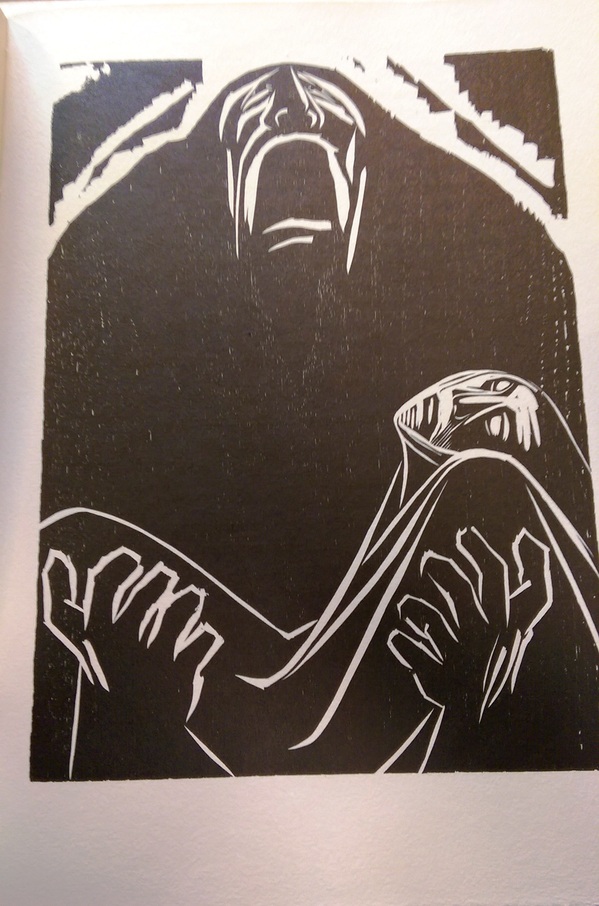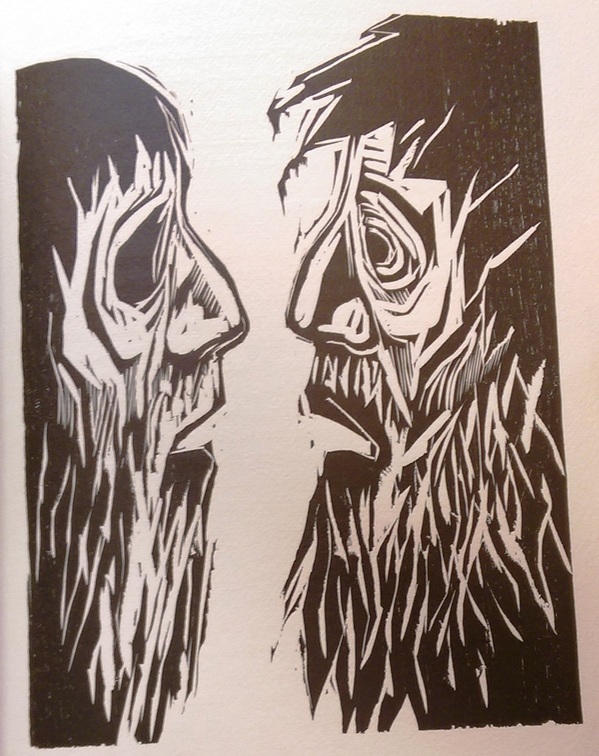I’m back with more material from Denison Special Collections today.Along with the extra-illustrated Shakespeare works, one of my favorite items was this series of woodcuts from Claire van Vliet. They’re in a 1986 printing, The Tragedie of King Lear, that replicates the spelling, punctuation, lineation, and italics from the First Folio of 1623. There were too many good cuts for me to post, so I’ve included some of my favorites below.

Here we see the height of the storm in Act 3, followed by a cowering, mad King Lear

I find this cut especially interesting because of Lear’s animalistic features–they seem to mimic the Fool’s lines, “[Wise men] know not how their wits to wear, their manners are so apish.” The portrayal of Lear as being animalistic recently got attention from Michael Clody, who brings up numerous instances where the King himself evokes animal features. They ultimately form a sort of primal cry at the point of Cordelia’s death, as Lear shouts “Howl, Howl, Howl, Howl!” The scene is portrayed below, in van Vliet’s most dramatic image:

Clody writes that this scene fundamentally merges the man and animal within Lear, as the “Howl” also evokes the question, “How?” The cries of “Howl” or “How” are not answered (nor, if we take “Howl” to be a command, is it followed); Clody says Lear trades an “objective communal truth” to explain what has just happened. for simply the “experience that the cry is.”

Here we have Lear (right) and the blinded Gloucester (left), posed symmetrically in a way that highlights their similar persons and situations. Lear’s plot and Gloucester’s subplot echo each other in more ways than we could discuss here. This moment comes in Act 4, Scene 6, when Gloucester and Lear meet after the storm. Both have, as Stanley Cavell observes, given into destruction–Lear to the storm, and Gloucester to the cliffs of Dover at his attempted suicide. Gloucester cries, “O ruined man! This great world/ Shall so wear to nought,” implying that Lear’s fate is not only Lear’s, but that of the world (or perhaps just the kingdom) around him. But of course, it is Gloucester’s fate as well; both come to their demise by the end of the play. The symmetrical image above, then, shows Lear seeing a reflection of himself in Gloucester (we can quite easily imagine a mirror between them). And while Gloucester sees no mirror, “O ruined man!” could just as easily refer to himself, such that Lear indeed acts as a reflection.

Lastly, we have the reconciliation of Lear and Cordelia in Act 4, Scene 7. Lear in this image seems to have worn down even further since the scene prior, further resembling the weakened Gloucester.